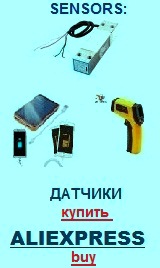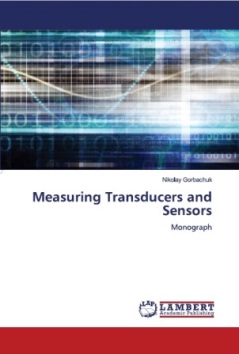Transducers, gauges, sensors - Information portal © 2011 - 2025 Use of material is possible by placing an active link
Selenium photocells
In 1876 by Adams and Dey the quite new phenomenon, not getting at that time physical explanations, was open. Essence of this phenomenon consisted in that at illumination of stick of selenium there was independent electromotive force on her. As it sometimes is with the new openings, about this phenomenon soon forgot and only in 30th of our century it was open again, got the name of photoeffect of plug-forming layer and found a practical output at once, becoming basis of photocells with a plug-forming layer.
The first photocell of similar type was made from a cuprous oxide and during the row of years had some application. Almost simultaneously with him a selenium photocell which got considerably more wide distribution and did not lose yet the value in our days was invented.
Technology of making of selenium photocell suffered the row of changes from the moment of his invention.
In principle every photocell with a plug-forming layer, or, as he is differently named, valve photocell, is the system, consisting of metallic substrate, skim of semiconductor and overhead metallic semilucent electrode. In the process of making of valve photocell in the district of substrate, or a locking layer must necessarily appear in the district of overhead semilucent metallic electrode.
The substrate of future photocell performs the two duties. From one side, she is the holder of fragile selenium layer, protecting him from mechanical damages, and on the other hand, at her to the help a reliable electric contact is carried out. In this connection a substrate must be massive and made out of steel sheet in 1-2 mm. thick. The side of substrate in form disk, which a selenium layer is inflicted on, is polished or processed by a sand-blast machine in order that a selenium layer well would adjoin to the steel disk. The polished substrate is carefully washed, dried out and suspended into the bell of a vacuum setting the polished surface downward.
A selenium layer is inflicted by the method of evaporation in a vacuum. For this purpose under the bell of a vacuum setting a electro- heater stove, executed from a nikhrome spiral, is set. Into a stove a small glass cup is placed from molybdenum glass, where the several of melting selenium is loaded. A ferrous disk is in the distance a 70-100 mm from a cup with selenium, on possibility in the middle for the even causing of layer.
Since under the bell of a vacuum setting a vacuum is set an about 10 ^-4 mm Hg, through the puttee of heater stove a current is skipped with such calculation, that being in a glass cup selenium was quickly melted and began to evaporate. Then strength of current in a stove falls down to the value, providing even motion of evaporation of material.
For the receipt of photocells it is necessary with good parameters, that the thickness of layer of semiconductor was evened 0,1 mm.
Causing of semiconductor layer the method of evaporation in a vacuum the exact receipt of the set thickness of layer and his good adjoining provides to the rough surface of disk : flying molecules or atoms of evaporant fill everything shallow deepenings and roughnesses of surface, as a result a reliable electric contact is created with small comparatively the value of size of transitional resistance on a border a metal is a semiconductor.
The selenium inflicted by such method is in amorphous modification, has very high specific resistance and does not yet possess necessary photo-electric properties. Therefore on the next stage of technological process selenium is transferred from amorphous modification in crystalline one, possessing large light-sensitivity. For this purpose a disk with the selenium inflicted on him, taken out from under a hubcap, at once is brought in a stove, preliminary heated to the temperature 160-170° С. crystallization of selenium, attended with the change of his black colouring on grey, begins Soon. After acquisition of all surface of selenium of the grey colouring incandescence of stove rises, her temperature is led to 200-210° C and a future photocell is maintained during one and a half - two hours at this temperature.
To the overhead semilucent metallic electrode the two basic requirements are produced. At first, he must be transparent enough in the corresponding area of spectrum, and, secondly, in order to avoid unavailing losses must possess high electric conductivity.
Experience showed that the best results turned out then, when an overhead electrode is inflicted by the method of cathode dispersion.
Thus an overhead electrode is under high positive potential. The nebulized material, being under negative potential, is exposed to bombardment the positive ions of argon because of origin of gas digit in a bell, filled with an argon under constraint a 0,1-0,15 mm Hg.
In the process of cathode dispersion the surface of selenium is heated. In order to avoid an overheat dispersion is conducted by short periods by duration in 10-12с with an interruption for 3-5 min
Ready, the sensible disks of photocell going to the ebonite or plastic mounting with shown out outside by two clamps.
See:
русский / english
Home >> Photo effects, light >> Selenium photocells
Photoconductivity
Photoeffect of plug-forming layer
Solar battery
Selenium photocells
Selenium fotoresistance
Bolometrs
Photo effects, light
• Information about various converters and sensors of physical quantities, parameters of various physical processes is presented.
• Electrophysical properties and effects in various electrical materials.
• Theory, experimental results, practical application

See also:
CONVERTERS, GAUGES, SENSORS
Information, news, advertising


